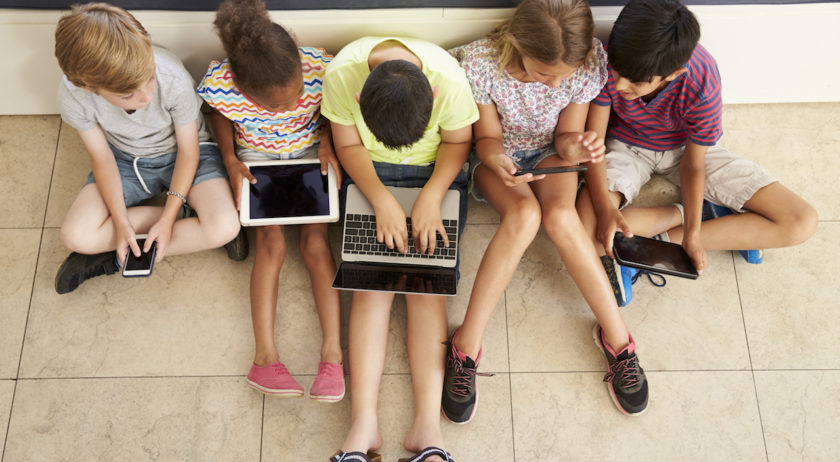Social media is a vital lifeline for most 21st century teenagers and is becoming more important for preteens, as well. The use of texting is ubiquitous among the 95% of teenagers who have access to a smartphone. For many children, Facebook and Instagram are the most widely used tools for knowing what’s going on within their peer group. Facebook, and more recently Twitter, are increasingly becoming the main source of news and information for teens and preteens. For psychologists and other clinicians working with teens and preteens, this means knowing more about social media. To help you, we have prepared The Psychologist’s Guide to Children’s Social Media.
Many clinicians choose not to use social media in direct work with their patients. While I agree with this approach, I am also more open to having a separate “professional” account for communicating with patients and the public as a whole. (I have more to learn about this and will be attending a series of workshops at the American Psychological Association in San Francisco during the summer of 2018, so will be able to share more in these pages after that.) However, social media can be a great tool for clinicians who choose to use it directly with their patients to help with understanding the importance of this in their patients’ social and emotional lives. Learning about the capacity of different social media platforms can be particularly helpful in working with children.
In the following section, we provide you with information about the major social media platforms that preteens and teens are using on a regular basis and the impact that these tools have on children today. Here is The Psychologist’s Guide to Children’s Social Media:
Videos, videos, and more videos! YouTube has great information for clinicians who want to encourage their patients to develop skills for yoga, meditation, mindfulness, relaxation, and stress management. Users are able to subscribe to the pages they find helpful. YouTube is the main online activity for elementary school kids, as 65% of their media time is on YouTube.
This platform has been around for the longest time of all current major platforms (besides texting) and is a very easy way to befriend and chat with peers. Within the last couple of years, Facebook has turned into a platform that consists mainly of sharing pictures/videos and tagging one’s friends in them. However, more images and other content are being exposed to the public in extremely quick and effective ways.
This platform gives users the freedom to put out content in at least 140 characters in posts called “tweets.” Instead of “friending” others, users “follow” others, and others can follow them back. There is a “timeline” on Twitter where users can see the content of the people they follow, and vice versa. The “retweet” action gives the same amount of impact as picture/video sharing on Facebook. The infamous “hashtag” feature is widely used in Twitter, Instagram, and even Facebook to create social trends.
Texting is now crucial to communication on the move. One of the downsides to this is that users can be contacted at any point in the day and expected to respond within a certain amount of time. Now that most teens and preteens get phones, and often smartphones, at such a young age, they are exposed to what is online much sooner in life. Teens and preteens are much more apt to text than to talk on the phone or respond to voicemails.
This was the third most popular social network for teens in 2018. This platform has a similar format as Twitter because of the timeline feature. However, users of Instagram can post pictures/videos with captions and not just words contained in a limited character space. They can also comment and “like” others’ content for commodity purposes. Both Instagram and Twitter have pages where users can view posts that are similar or relevant to what they post, like, or comment on their timeline.
This is a social media posting and discussion platform where subscribers can post links to certain content or start-ups for discussion about a certain topic and other subscribers can vote on whether the content is useful to them. Users can start the discussion “thread” and post content for others or simply contribute to the discussion itself.
This was the most popular social network for teens in 2018. This newer platform lets users send pictures/videos to their friends, and the content automatically goes away in 24 hours. Snapchat started the “My Story” addition, where users can post media into a “story” section of their profile, and all of the contacts on that platform are able to be accessed within 24 hours. Facebook and Instagram now have this feature, as well.
Tumblr is one of the older but still popular social media platforms that gives users the chance for complete customization of their profiles and image the way they want. It lets users choose how others see them and how they see themselves. They can post memes, gifs, pictures, songs, videos, and more and can also reblog the posts of others so that they appear on their profile. There are no chat rooms or places for instant interaction, it’s all about users building their profiles and having others follow them so they can see what they post on the profile.
Clinicians are urged to become familiar with social media platforms since so many people, especially teens and preteens, use them very often. However, clinicians should not rely too much on social media in their work due to its potential untrustworthiness, as public pages can easily present false or inaccurate information. While teaching children how to navigate their use of social medical is typically the purview of parents, clinicians may also need to help kids and teens in this regard. Learning more about how social media works (and engaging in a bit themselves) would be the first step.




